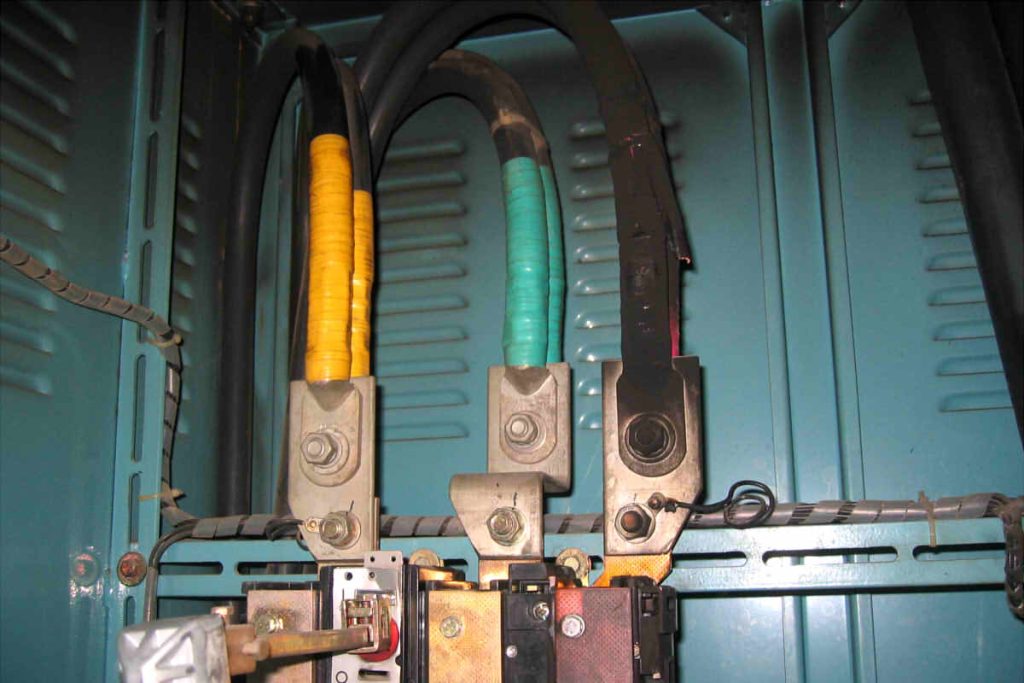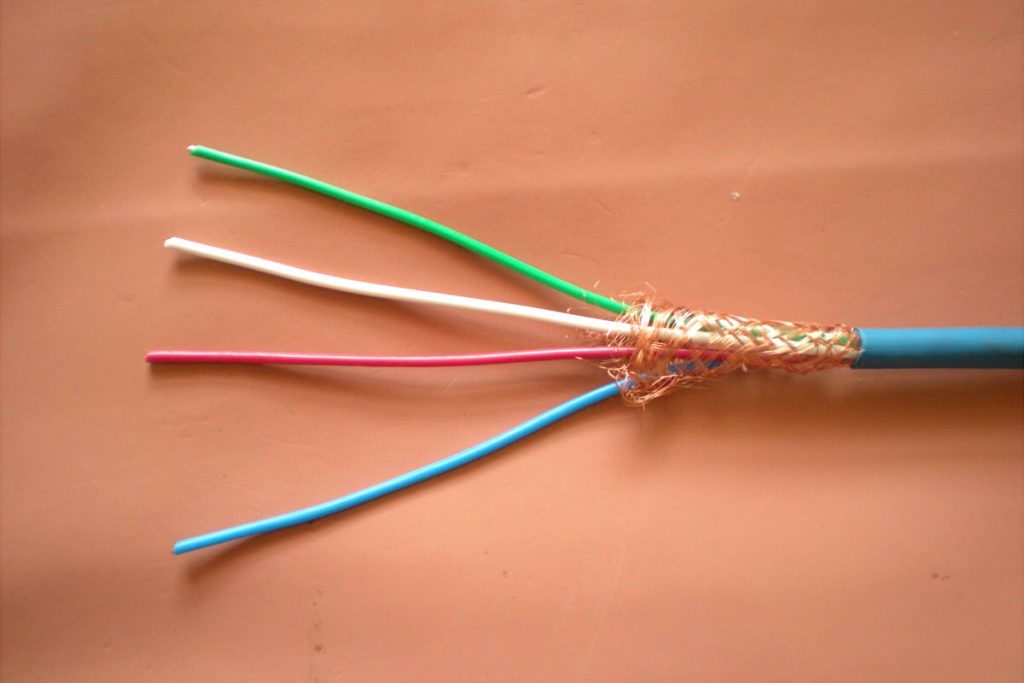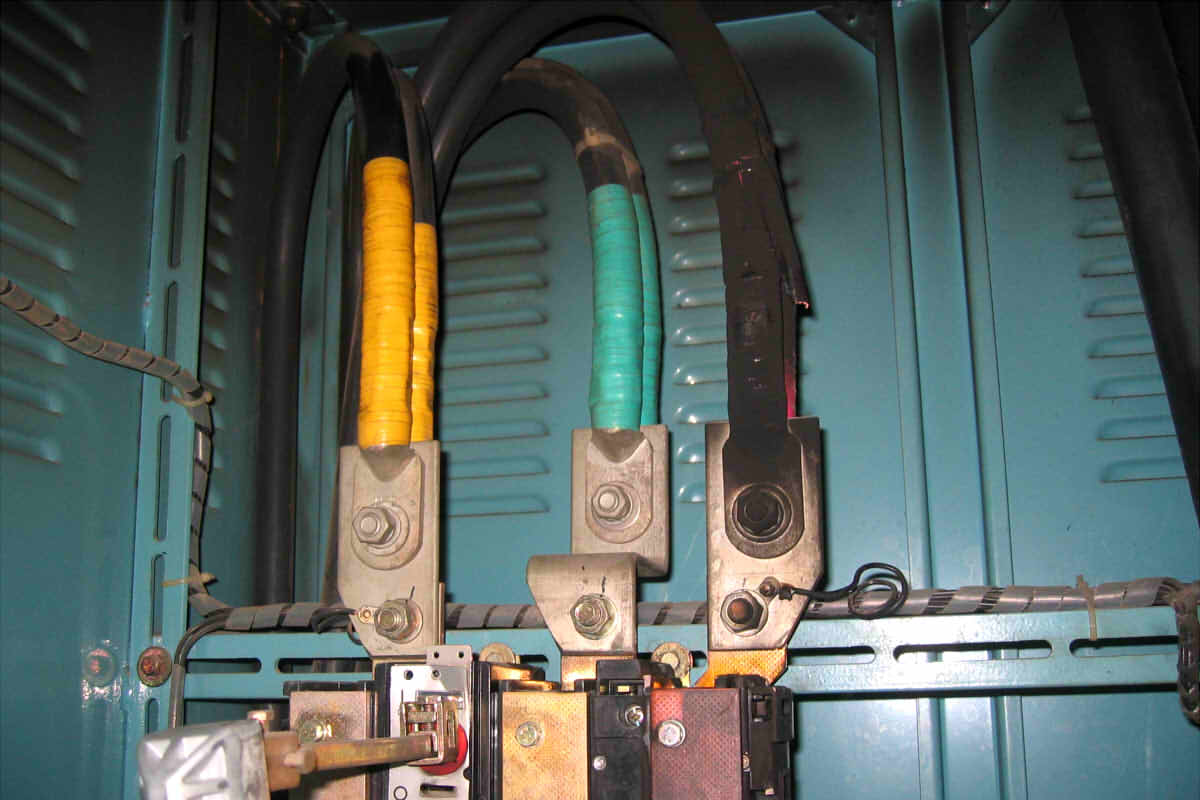Electrical professionals must select the appropriate cable based on the power of the load, the distance from the supply and the loss due to voltage drop of the line, the temperature and humidity of the environment. ZMS brings you two examples of errors in the selection of electrical cables, from which we hope you learn from this.
Case 1: Improper Cable Selection Due to Load Current
A factory electrician had selected cables for a production facility with the following specific requirements:
- Three-phase supply of 380 V
- 22KW charging motor power
- Feeding distance of about 130 m
- permissible voltage drop of 5% On the line
- power factor 0,85
Thus, The electrician calculated that the theoretical current rating of the cable was 39,4 A. This value is only approximate due to the choice of the relevant coefficient for the calculation formula. On this base, chose the copper wires 10 mm² with a maximum current capacity of 43 A. Nevertheless, ten days after finishing the project with this election, these cables suffered a fault.

Tras descartar la calidad del propio cable, el electricista centró el problema en el propio cálculo. Fue entonces cuando se dio cuenta de que había pasado por alto un aspecto importantísimo del uso real: la frecuencia de arranque y parada del motor de carga era muy frecuente.
La corriente de arranque generada durante la puesta en marcha de un motor de carga es de 5-7 veces el valor de la corriente nominal. Esto provoca que corrientes muy superiores al valor nominal incidan con frecuencia sobre el cable elegido, lo que inevitablemente daña el cable con el paso del tiempo.
En combinación con la situación real, el electricista cambió a los cables de 16 mm² de sección y no se produjeron más fallos.
Case 2: Incorrect Selection of Cable Structure
Plus cable charging, the wrong selection of the cable structure it can also make it impossible to ensure long-term safe use. Once there was a breakdown in a mine due to the incorrect use of cables.
The mine introduced a joint control unit controlled using the serial communication protocol RS485. In the process of wiring communication lines (RS485+, RS485-) between the central computer and the four extended drives, the mine electrician assumed that the fire-retardant cables (all three conductors and four wires) used in the underground mine were perfectly capable of performing the task.
Nevertheless, after installation, el dispositivo fallaba de vez en cuando con fallos asociados. La empresa minera atribuyó el problema a la calidad de la unidad de control conjunta. Nevertheless, cuando el personal de mantenimiento de la unidad lo probó, descubrió que había un problema con el cable utilizado.

Para evitar las interferencias electromagnéticas, así como las interferencias geomagnéticas características de las minas subterráneas, el manual de instalación especifica que el cableado de control de la comunicación debe utilizar los cables de comunicación entrelazados con apantallamiento metálico. En función de la distancia de comunicación, también se requieren resistencias de compensación adicionales si es necesario.
The electrician had only taken into account the flame retardant requirements of the cable, but had neglected shielding requirements. After replacing the cables with new ones shielded communication cables, the installation went back to normal.
Resume
These two cases of cable-induced failures demonstrate the importance of cable selection.. ZMS reminds you that, when choosing a cable, You must consider a number of factors to determine the specifications and structure of the cable based on the actual requirements of the application.. If you have any questions about the selection of electrical cables, you can consult our cable experts. They will give you specific advice based on your application requirements to ensure reliable use of the cable..

